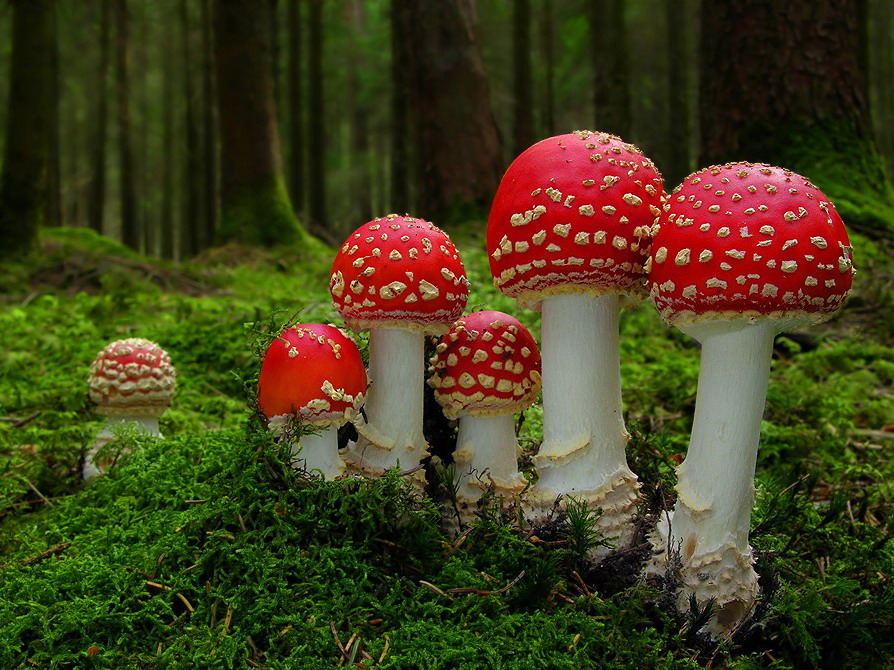Capsaicin and it`s metabolites are fat-soluble chemicals, insoluble in water, not proteins. They can bind to proteins non-specifically, but prefer to be where it`s oily or fatty. There are enzymes in the stomach that can break down fats, protein and sugars, plus the pH of your stomach is around 1.5, i.e. extremely acidic. The gaul bladder also pumps bile acids in there and bile acids are fantastic detergents, which means they can make fats soluble in water. So, stuff is either broken down in the stomach or made soluble in water and passed along. Not all that much is absorbed into the blood stream through the stomach, that mainly takes place in the small intestines.
Why do we get stomach cramps after eating peppers? Partly it`s due to high capsaicin levels and partly it`s due to unknown stuff in the peppers. Nagas give me cramps, but aren`t very hot, in my opinion. 7-pot prinos are raging hot, but don`t give me cramps. Carolina Reapers give me the mother of all cramps, but aren`t anywhere near as hot as 7-pot browns, which don`t bother my stomach much.
Back to capsaicin. It acts on a receptor called TRPV1, which is linked to a heat-sensor system in the mouth, esophagus and stomach (and skin etc). That sensing has to be almost instantaneous, so you get rid of what`s burning you, so it`s linked to nerves that send the signal to the brain at insane speeds, so it is almost instantaneous.
TRPV1 receptors are also linked to nerves that sense pain. Sensing pain is called nociception. The TRPV1 receptors in your stomach seem to send a signal to the brain that says "holy shit, that`s painful" rather than "holy shit, that`s hot". The response of your stomach is them to try and rid itself of the offending pain by forcing the stomach to cramp, leading to vomiting. Now with capsaicin the vomiting part isn`t nearly so strong a response, most of the time. So think of cramps as a prelude to vomiting and as a signal to stop you eating any more of whatever it was that caused pain.
The trick, then, is to stop the capsaicin from acting on the TRPV1 receptors in the stomach wall. That`s why things high in fat help. They allow the capsaicin to move into the oily stuff in your stomach and not be able to get at the stomach wall. Cell membranes are made of fat, so that`s where the capsaicin wants to be if there is nothing in your stomach other than the normal water-based acid. Foods helps because it is a mix of protein, carbohydrate and fat, largely. Proteins and carbohydrates cab bind to oily things like capsaicin non-specifically, as does the fibre in your diet, so bulk food helps. The fats in the food give the capsaicin somewhere to hang out instead of your stomach wall.
So, it stands to reason that if you have non-specific stuff to bind up capsaicin (proteins are the best at that), some fats (peanut butter, olive oil etc) and some bulk fibre (banana), you are going to have some success at stopping the capsaicin getting to your stomach wall. So sure, a meal also helps, but if you are eating 10 or more superhots a week, you`ll end up being 350lbs in about 5 minutes.
There is also something to the idea that drinking a thickish shake-type drink coats your pipes and stomach better than just eating a meal.
Capsaicin is also absorbed by the gut and does get into the blood stream. Not all of it by any stretch, but if you take a lot of Vitamin B a lot passes straight through you and only some is absorbed. Capsaicin is the same, although it varies a lot between individuals. I can honestly say that eating a couple of superhots does not give me much in the way of ring-burn. Some, sure, but not a lot. However, I do get hot pee, showing that it`s being filtered out of the blood via the kidneys. Some people don`t get that and more capsaicin passes through the intestines. It just depends how you are put together.
Ok. Questions from anyone?

 to THP, ~727!
to THP, ~727! 